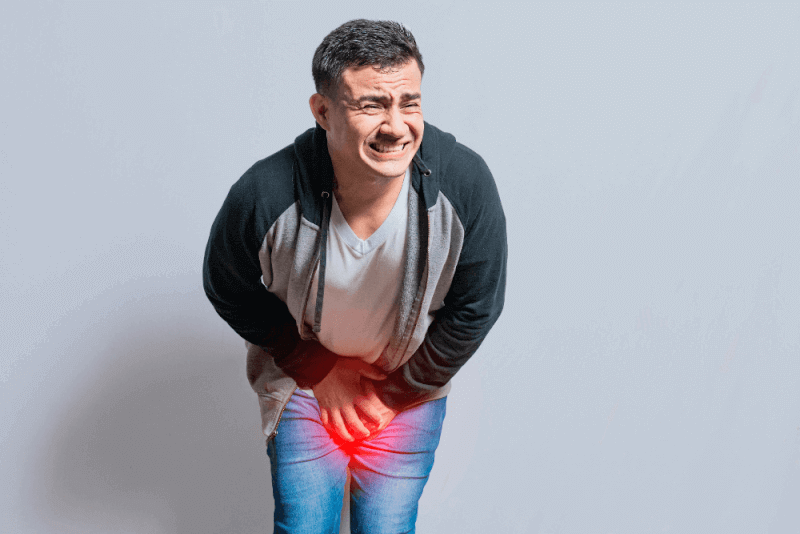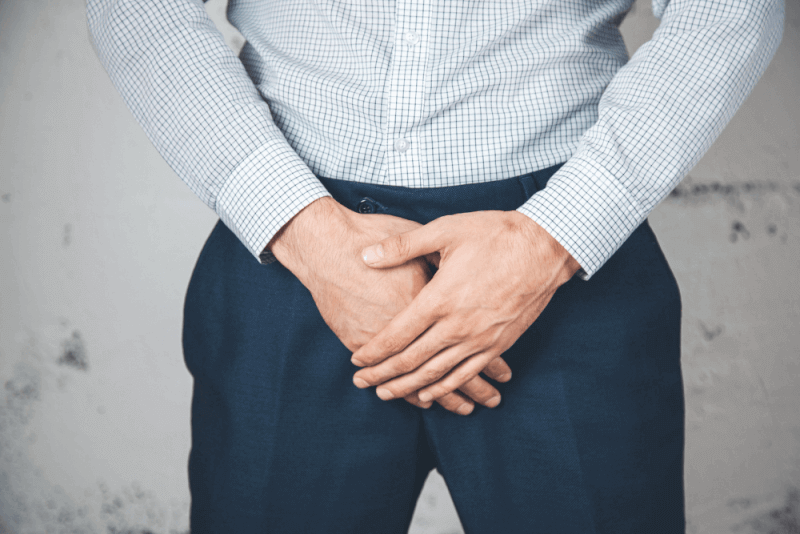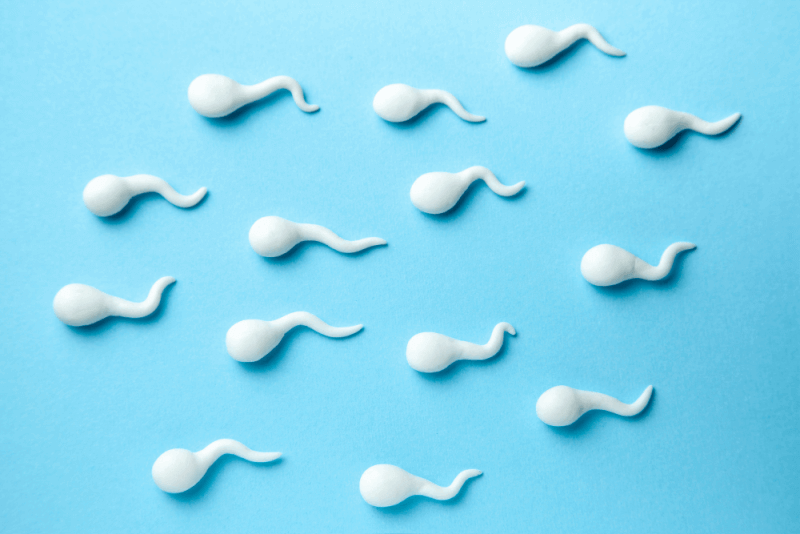What is urinary incontinence?
Urinary incontinence, also called loss of bladder control, is an extremely common health problem that patients are ashamed of. It ranges from urinary incontinence with a severe cough or sneeze to sudden and strong urinary incontinence that is so strong that you cannot reach the toilet.
Urinary incontinence, especially with advancing age, is not one of the natural consequences of old age. If urinary incontinence starts to affect daily life, it is necessary to see a doctor. It is important that treatment of urinary incontinence, a problem that can be treated with simple daily life changes for most people, starts on time.
Diagnostic methods for urinary incontinence
Patients undergo a number of tests and examinations to investigate the presence and underlying causes of urinary incontinence. Before this, a detailed history and physical examination of the patient is necessary. A urodynamic test may then be recommended. In order to understand the cause of urinary incontinence, the following tests may be requested.
- Urine and blood tests
- Examination of the urinary tract and bladder using a cystoscope
- Bladder ultrasound
Symptoms of urinary incontinence
Many people experience occasional urinary incontinence. This is considered normal. However, some people may experience this problem frequently. During these incontinences, small or moderate amounts of urine may be released.
Types of urinary incontinence
The types of incontinence help to determine the conditions under which incontinence occurs.
Stress incontinence
In general, urinary incontinence is experienced when pressure is applied to the bladder. These stressors can include heavy exercise, coughing, sneezing or lifting heavy objects.
Urge to urinate
In this type, patients primarily experience a sudden and urgent need to use the toilet. Afterwards, urinary incontinence occurs. In this type, patients feel the need to urinate frequently, even at night. Urge incontinence can be due to a simple cause such as an infection or more serious causes such as diabetes or a neurological disorder.
Overflow incontinence
In these patients, complete emptying of the bladder is not possible. For this reason, patients need to go to the toilet frequently or there is a constant dripping of urine.
Functional incontinence
In these patients, a physical or mental disability prevents them from reaching the toilet on time. For example, patients with severe arthritis may leak urine because they cannot unbutton their pants in time.
Mixed incontinence
It is a name given to conditions with more than one type of urinary incontinence. In mixed incontinence, stress urinary incontinence and urge urinary incontinence are usually seen together.
Causes of urinary incontinence
Incontinence can be caused by daily routine and habits, but it can also be caused by physical problems or underlying medical conditions. After a thorough evaluation by doctors, the cause of urinary incontinence can be fully understood. The cause of urinary incontinence is basically divided into permanent and temporary.
Temporary urinary incontinence
Some foods and drinks that people consume during the day act as diuretics. This stimulates the bladder more and increases the volume of urine. These foods and beverages include the following.
- Caffeine
- Alcohol
- Artificial sweeteners
- Carbonated drinks
- Mineral water
- Chocolate
- Chile pepper
- Spice
- Foods high in sugar or acid
- Citrus fruits
- High doses of vitamin C
- Heart and blood pressure medicines
- Tranquilizers
- Muscle relaxants
In addition, urinary incontinence can also be seen with simple health problems. These situations include the following.
Urinary tract infection
Infection in the urinary tract can cause irritation of the bladder. This can sometimes lead to a strong urge to urinate and sometimes to incontinence.
Constipation
The rectum, located near the bladder, also shares some nerves with the bladder. For this reason, hard and compacted feces in the rectum can cause excessive stimulation of the shared nerves and increase urinary frequency.
Persistent urinary incontinence
Some factors of urinary incontinence cause the condition to become permanent. These conditions, especially those caused by physical problems, include the following.
Pregnancy
The hormonal changes women experience during pregnancy and the ever-increasing weight of the fetus can cause stress incontinence.
Birth
Vaginal delivery is one of the factors that cause the muscles used in bladder control to weaken. It is also possible that the bladder nerves and supporting tissues can be damaged during labor. These conditions can cause the pelvic floor to fall. In case of pelvic floor prolapse, the bladder, uterus, rectum and small intestine descend from their normal position and may protrude into the vagina. These protrusions can cause urinary incontinence.
Age
Aging of the muscles that control the bladder leads to a decrease in the urine storage capacity of the bladder. In addition, bladder contractions occur more frequently with advancing age.
Menopause
The low secretion of estrogen after menopause causes the bladder and urethra to be affected. Because this hormone also maintains the health of the bladder and urethra. Urinary incontinence may occur due to the deterioration of tissues due to estrogen deficiency.
Prostate enlargement
A significant portion of urinary incontinence problems, especially in men, are seen due to benign prostate enlargement.
Prostate cancer
One of the causes of urinary incontinence in men is prostate cancer. Stress incontinence or urge incontinence is particularly common due to untreated prostate cancer. However, more common is urinary incontinence due to side effects of prostate cancer treatment.
Congestion
A tumor in any area of the urinary tract prevents urine from flowing normally. This leads to overflow urinary incontinence. In some cases, urinary stones in the bladder cause blockage of the urinary tract and urine leakage.
Neurological disorders
Parkinson's disease, MS, brain tumors, stroke and spinal cord injury can affect the nerve signals involved in bladder control. In this case, patients may experience urinary incontinence.
Risk factors for urinary incontinence
Urinary incontinence is a more common problem in people with certain risk factors. These risk factors include the following.
Gender
Women are more likely to experience urinary incontinence due to pregnancy, menopause, childbirth and normal female anatomy. In addition, men with problems in the prostate gland have a higher risk of urinary incontinence of the urge and overflow type than women.
Age
With advancing age, the muscles in the bladder and urethra weaken. These changes that occur with age lead to a decrease in the amount of urine that can be held in the bladder and an increase in the possibility of involuntary urination.
Being overweight
In overweight people, fatty tissue causes increased pressure on the bladder and tissues around the bladder. This weakens the muscles here. People who are overweight are more likely to experience urinary incontinence when coughing or sneezing.
Smoking
The use of tobacco and tobacco products is among the reasons that increase the risk of urinary incontinence.
Family history
The risk increases if there is a first-degree family history of urinary incontinence.
Some diseases
Some diseases, especially diabetes and neurological diseases, cause an increased risk of urinary incontinence.
Complications of urinary incontinence
Complications of chronic urinary incontinence include the following.
- Skin that is constantly wet can develop rashes, skin infections and sores.
- People with urinary incontinence have an increased risk of recurrence of urinary tract infections.
- Finally, urinary incontinence can affect people's daily and social lives.
Urinary incontinence in women
Urinary incontinence is much more common in women than in men. The main reason behind this is periods such as menopause, childbirth and pregnancy. The presence of one of these factors in a woman's life may be sufficient for the stage of urinary incontinence problem.
The problem of urinary incontinence that women face during pregnancy usually ends with childbirth. However, some women lose the tightness of the pelvic muscles due to the difficulty in vaginal delivery and this causes these people to have problems after birth.
During menopause, women's bodies undergo significant changes. In particular, dramatic changes in estrogen hormone levels can affect bladder control.
Urinary incontinence in men
The most common cause of urinary incontinence in men is problems with the prostate gland. In addition, the factors that can cause urinary incontinence in men include the following.
- Prostatitis, defined as inflammation of the prostate gland
- Injury and damage to nerves or muscles due to previous surgeries
- Enlargement of the prostate gland with the aging of men
Urinary incontinence in children
Children normally gain bladder control between the ages of 2 and 4. The inability of children with toilet habits to stay dry during the day is called daytime bedwetting problem and the inability to stay dry at night is called bedwetting problem. However, it is normal for children between the ages of 4 and 6 to occasionally wet their diapers. In order to talk about urinary incontinence in children, they should leak urine once or twice a week for several months.
Causes of urinary incontinence in children
The causes of urinary incontinence in children may not always be psychological. Whatever the reason, parents need to be understanding and helpful. Among the causes of urinary incontinence in children are the following.
- Incontinence is extremely common in children who hold their urine for too long.
- An overactive bladder causes children to suddenly get stuck and leak urine.
- An underactive bladder causes children to use the toilet only a few times a day and have little desire to go to the toilet. Children with underactive bladder may have poor or intermittent urine output.
- If children's bladder muscles or nerves do not work synchronously, it is possible for the muscles to stop urinating too early. For this reason, urine remaining in the bladder may leak.
Urinary incontinence treatment methods
In today's modern medicine, there are more options than ever before for the treatment of urinary incontinence. In planning the right treatment, issues such as the type of incontinence, how much it affects daily life and how serious the condition is are effective. Treatment options can be applied individually or in combination.
Bladder control training
In a significant proportion of mild urinary incontinence problems, the problem is solved with bladder control training. Bladder control training includes the following treatment methods.
Pelvic muscle exercises
Pelvic floor exercises, also called Kegel exercises, strengthen the muscles that support the bladder. This makes it possible to keep urine in the bladder and prevent leaks.
Suppressing urgency
This treatment helps to control the strong and sudden urge to go to the toilet. These include exercises such as breathing exercises, standing still and distraction to prevent the pelvic floor muscles from tightening.
Timed trips to the toilet
Determining toilet times and consistently following a plan helps to control the bladder. Initially, the problem is solved by determining frequent toilet intervals and then extending these intervals.
Medical treatments
In cases where urinary incontinence is serious or where the above-mentioned methods do not provide complete success, medical treatment options should be considered. Medical treatment options include the following.
Medication use
It is possible to use medicines produced in the form of pills, liquids or patches to eliminate bladder control problems. In addition, some drugs developed for overactive bladder are known to cause cognitive decline, especially in patients over the age of 65. For this reason, the medicines that are most effective for the patient and have the least side effects should be planned and prescribed by the doctor.
Vaginal estrogen cream
Especially in women with urge and stress urinary incontinence, low doses of estrogen are used to alleviate the condition. These creams are applied to the vaginal walls and urethral tissue.
Bulking agents
Volumizing agents that allow the bladder deficit to be closed are a method applied by the doctor. With this method, a paste or gel-like substance is injected into the area around the urethra. It is a treatment method that is especially suitable for people with stress-type urinary incontinence.
Medical device use
In order to manage urinary incontinence, it is also possible to use medical devices such as catheters that allow urine to drain from the bladder. In addition, a vaginal pessary ring that provides pressure to reduce leakage or a urethral attachment to prevent leakage can also be used.
Biofeedback
It is a method to be aware of the signals coming from the body. This can help to restore control over the bladder, urethra and muscles.
Electrical nerve simulation
In this method, mild electrical currents are applied to the nerves around the bladder to control urination and bladder reflexes.
Surgery
Surgery may be recommended to treat urinary incontinence in case of a change in the position of the bladder, obstruction in the urinary tract or problems with the prostate gland. By eliminating these problems, the problem of urinary incontinence can also be solved.
Botox
Botox method, which is used to relax the muscles in the body, is also a method used in urinary incontinence problem. Botox can be injected into the bladder to relax the bladder muscles and solve urinary problems. Since this treatment is not permanent, it will lose its effect over time. For this reason, it should be repeated at regular intervals.
Neuromodulation devices
Pacemakers can be implanted in the nerves leading to the bladder to improve bladder control. In addition, a nerve near the ankle can be stimulated for better bladder control.
Suspension procedures
Another method used in both men and women is suspension procedures. In this method, which is performed to support the urethral canal, synthetic materials can be used as suspension material or the patients' own tissues can be used.
Artificial urethral sphincter
It is a treatment method that can be used in male patients. It is a device that allows men with stress urinary incontinence to close the urethra when they cannot urinate. It is especially used for leaks that occur after prostate surgeries.
Behavioral and lifestyle changes
Some lifestyle changes can easily solve the problem of urinary incontinence. These changes include the following.
- Quitting smoking.
- Being at an ideal weight.
- Not drinking alcohol.
- Prefer water over other drinks.
- Limit consumption of beverages before bedtime.
- Prevention of constipation.
- Not lifting heavy objects
How to prevent urinary incontinence?
Urinary incontinence is not always a preventable health problem. However, it is important to pay attention to the following points to reduce the risk of urinary incontinence.
- Quit smoking.
- Being at an ideal weight.
- Consume more fiber foods.
- Avoiding caffeine, alcohol and acidic foods
- Doing pelvic floor exercises







